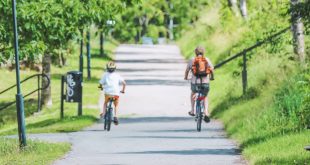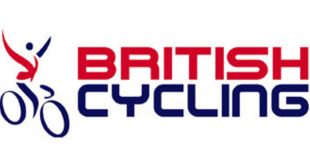Transport Secretary Grant Shapps has today given councils across England £175 million to create safe space for cycling and walking, as surveys and independent polls show strong public support for high-quality schemes.
The money, part of the £2 billion announced for cycling and walking in May, will fund measures including School Streets, where streets around schools are closed to motorists at school times, Low Traffic Neighbourhoods (LTNs), where residential side streets are closed to through traffic to stop rat-running, segregated cycle lanes and pedestrian improvements.
However, Shapps has set ‘tough’ new conditions on councils receiving funding, requiring them to ensure schemes are ‘properly consulted on’. This will help avoid the problems seen in a minority of the schemes developed in the first round of funding. If a council does not meet these conditions, future funding allocations will be reduced, and clawbacks could also be imposed.
“We want to do everything we can to make it easy for people to include some activity in their daily routines – whether that’s cycling to work or walking safely to school,” said Prime Minister Boris Johnson. “We can see the public’s strong appetite for greener and more active travel, and this funding will help ensure the right infrastructure is in place to build truly active neighbourhoods.”
Shapps said: “It has been great to see so many people build cycling and walking into their daily travel habits. To support them, we know it’s vital to have the right infrastructure in place so everyone – cyclists, pedestrians and motorists – can use our roads.
“Whether you’re walking, cycling, driving or using public transport, people must have the space they need to get around safely.”
As part of the Transport Secretary’s plan to ensure councils develop schemes that work for their communities, he has set out they must:
– publish plans to show how they will consult their communities – including residents, businesses, and emergency services among others
– show evidence of appropriate consultation prior to schemes being implemented
– submit monitoring reports on the implementation of schemes six-12 months after their opening, highlighting how schemes have been modified based on local feedback to ensure they work for communities
Local authorities will be required to engage closely with the department throughout the process – while Active Travel England, when set up, will further assess plans for active travel schemes to ensure they are of the ‘highest quality’. To help councils implement better schemes, updated guidance has also been released.
Greater Manchester’s cycling and walking commissioner Chris Boardman said: “Making it easier for people to get about on foot and by bike is the single best investment that councils can make because it doesn’t just address transport. Time and again, evidence shows that communities that prioritise cycling and walking enjoy major benefits – cleaner air, less congestion, improved health, and even a bigger average monthly spend at local shops and restaurants. Most importantly, it makes our streets happier places to be.
“I wholeheartedly support the Government’s continued funding of this crucial work. The emphasis on more consultation is welcome too, so that we can ensure the best solutions are put in the right locations. If we get this right, many of these pop-up routes and low-traffic neighbourhoods will become a permanent and valued part of people’s daily lives. The industrial revolution started in Great Britain, now we should lead the green revolution.”
Councils will receive funding based on how well they have complied with the criteria set out by the Transport Secretary in July. In a letter to council leaders outlining the new funding allocations, Shapps said that while most schemes were of genuine value in promoting cycling and walking, other schemes implemented through the first tranche of funding had made ‘less meaningful change to the status quo’.
He said he had in mind many of the pavement widenings put in town centres by many councils using barriers. These, he said, could “prevent pedestrians from crossing the road, cause congestion for buses and motor traffic, and impede access for kerbside businesses,” yet were also “relatively little used by pedestrians”.
The Walking and Cycling Alliance, comprising Bicycle Association, British Cycling, Cycling UK, Living Streets, Sustrans and the Ramblers, has set out the ‘urgent’ case for Low Traffic Neighbourhoods and uses evidence and case studies from across the country to tackle the urban myths that have emerged around them.
The report brings together leading voices in the active travel movement, including Boardman and former Shadow Secretary of State for Transport, Mary Creagh, to answer frequently asked questions about congestion, and perceived effects on business, emergency services and local consultation.
Speaking on behalf of the Walking and Cycling Alliance, Creagh, CEO, Living Streets, said: “Everyone should feel safe to walk, cycle, wheel or scoot on our streets, but that is not the case in too many towns and cities. Across the country, there is a silent majority in favour of more people-friendly streets, but all too often their voices are drowned out by a vocal minority.
“It’s vital more people start walking and cycling for local journeys, to reduce congestion, improve air quality and tackle the twin epidemics of loneliness and obesity. We hope this report will support councillors to build back better after the pandemic.”
Daisy Narayanan, director of Urbanism at Sustrans, added: “The COVID-19 crisis created a need to change the way we move around in our towns and cities, with walking and cycling being seen as one of the safest modes of transport during the pandemic.
“This urgency to designate more space for walking and cycling has naturally created opposition as change can be difficult for people, especially during a time of crisis.
“There is however overall public support for action to be taken to make it easier to walk, wheel and cycle around our towns and cities. Our latest YouGov poll shows that seven in ten (71%) UK parents agree that local authorities should take steps to make it easier for families to travel actively to school.
“Local authorities, therefore, need to continue to make it easier for people to walk and cycle and the Tranche 2 funding is a huge opportunity to progress the work that has already begun and create safer, healthier and truly inclusive streets and places. This is also a vital part of the solution to meet governmental climate change targets.
“Organisations like Sustrans are here to help and share our expertise with local authorities, whether it is engagement with communities or putting schemes in places.”
The report can be found here.
Read the November issue of BikeBiz below:
 BikeBiz Bicycle and cycling retail news
BikeBiz Bicycle and cycling retail news



